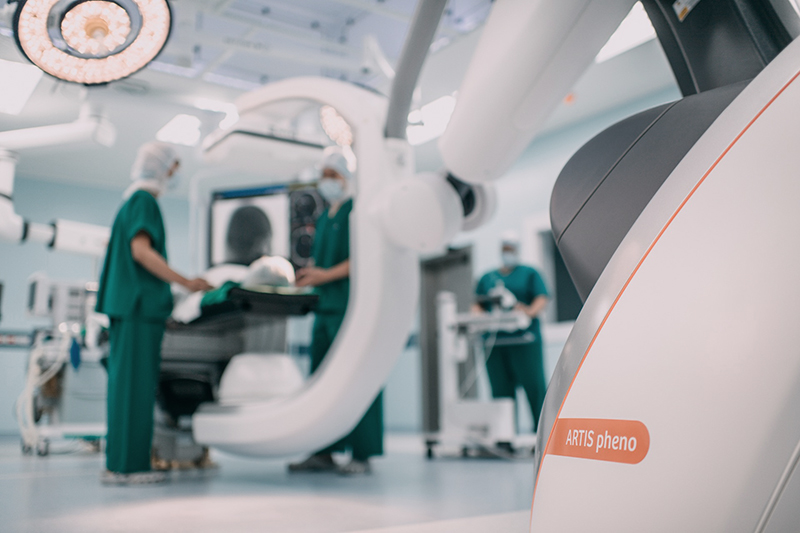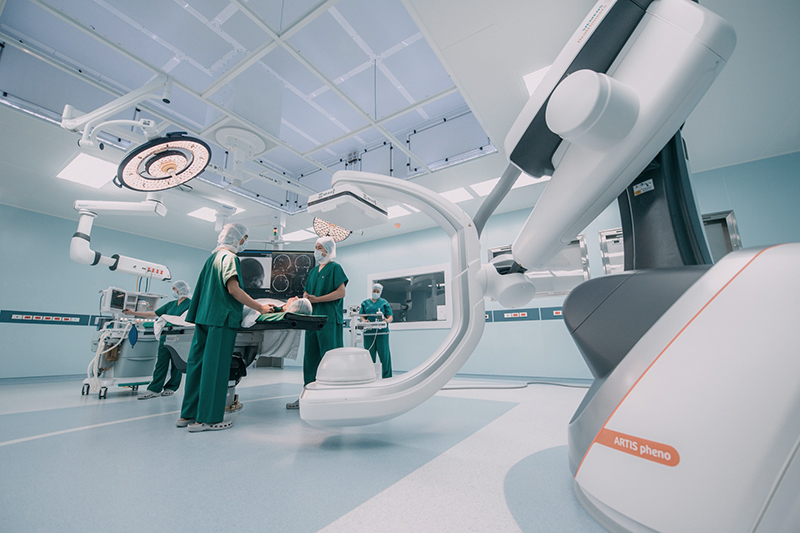Nowadays, orthopedic trauma surgery has evolved surgical procedures from open techniques which require long surgical incisions with a large amount of soft tissue and muscle dissection to minimally invasive surgery. The goal is to preserve biology and blood supply to the fracture areas in order to promote bone healing. Minimally invasive surgery in orthopedic trauma is defined as an operation with a small skin incision, gentle dissection of soft tissue, preservation of periosteum, and blood supply to the bone, as well as reduction and fixation of the fracture with implants.
In contrary to conventional open technique, minimally invasive surgery significantly results in a smaller skin incision, less pain, less surgical scarring, less blood loss, reduced length of stay in the hospital, fewer post-operative complications, and increased rate of bone healing from preserved blood supply. However with this technique, orthopedic surgeons have less visualization of the bony area and intra-operative imaging is required to check the reduction and alignment of the limb. Intra-operative C arm fluoroscope has an important role to evaluate the quality of reduction and fixation of the bony fractures. The high quality intra-operative imaging system is crucial to improve the accuracy of operation and reassure efficient reduction and stability of fixation of the bony fractures.

With the improvement of imaging systems, the ARTIS Pheno machine is a 3D fluoroscope that provides high resolution 2D and 3D (CT like imaging) intra-operative images. This real time 2D and 3D imaging enables instant decision making and facilitates control for better outcomes. 3D or CT like images give more detail of bony fracture, evaluate quality of reduction, and verify implant position. It is considered useful imaging system especially in periarticular fractures where 2D image may not be clear enough to identify quality of articular reduction and position of screws. The high quality and precise images allow surgeons to visualize the 3 dimension intraoperatively, especially in minimally invasive orthopedic surgery. This greatly enables the orthopedic surgeons to ensure the quality of operation while patients are still in the OR, resulting in reduced chances of reoperations. With a tableside control panel, movement of the robotic C-arm can be controlled by orthopedic surgeons themselves to reduce human error and with less time consumption used for position adjustment of the machine while operating. Furthermore, ARTIS pheno possess memory function that is synchronized automatically with the operating table. By this function, the robotic C-arm moves back to the operating field reaching exact positions as desired. This mechanism substantially reduces set up time and limits radiation exposure to OR personnel as the result of decreased trial and error. This is particularly evidenced in orthopedic trauma surgery since many views of an image are essentially required in different positions.
In addition, ARTIS pheno can be used in several fields of surgery such as cardiovascular surgery, endovascular intervention surgery, neurosurgery, and more with variable functions for imaging such as DSA mode for vascular images and supportive CT/MRI fusion.

The hybrid operating room is an innovative concept of an operating theatre that fully integrates a multimodality imaging machine with navigation system, CT, MRI, and more all in one operating room. It efficiently supports multipurpose function in many specialties of surgery in one operating room to make it more cost-effective.
At Bangkok International Hospital, the hybrid operating room has installed the ARTIS pheno with navigation system. Integration of 3D imaging and navigation system facilitates the minimally invasive orthopedic surgery to reassure a precise reduction and implant fixation while reducing operative time with less radiation exposure. Moreover, the hybrid operating room is able to support several surgical fields such as spine, vascular, cardiovascular and intervention surgery as a one-stop operating room for patients, especially in polytrauma cases.
The new hybrid operating room has started operating since 2019. This new facility significantly enhances the quality of treatment to patients with nearly zero complications from operating procedures.